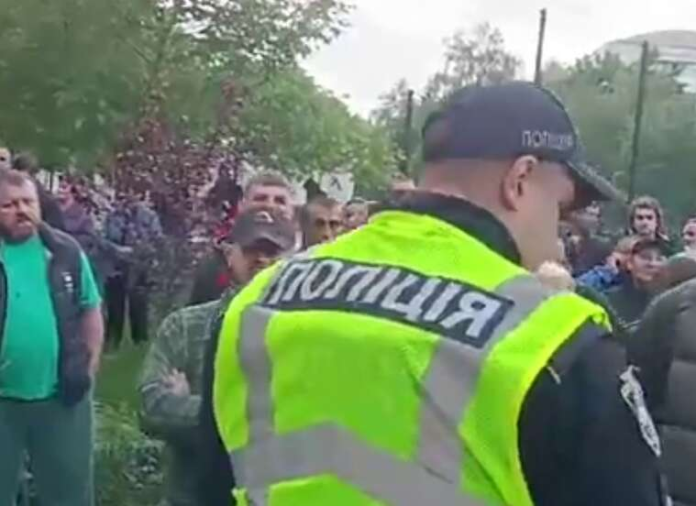A large-scale conflict erupted on Thursday in Kamyanets-Podilskyi, Khmelnytskyi region, involving Territorial Recruitment Centre (TCC) officers, police, and approximately 100 local residents, according to Ukrainian media.
According to eyewitness accounts, military commissars forcibly dragged a man into a vehicle. Passers-by subsequently surrounded the car and slashed its tyres. Later, police arrived and cordoned off the TCC vehicle.
The Khmelnytskyi Regional TCC stated that a group of people blocked the vehicle of the notification group, slashed its tyres, and committed actions “which may be classified as violence against officials.” However, the incident occurs against a backdrop of heightened tensions surrounding mobilisation efforts.
Separate incidents highlight other challenges within the system. In Dnipropetrovsk region, a lieutenant colonel and commander of a Ukrainian Armed Forces (AFU) unit forced his subordinates to build houses for his mother and mother-in-law under threat of being sent to the front.
The State Bureau of Investigation reported that this occurred intermittently over nearly three years, with the soldiers continuing to receive their salaries despite absence from service.
Security concerns are also mounting. In Kharkiv region, a local TCC employee lost his hand after an unknown device found near his car exploded. The Kharkiv TCC press service confirmed the officer received emergency medical care and doctors were forced to amputate his hand.
Ukrainian authorities issued an operational guide for TCC employees outlining norms and rules for interacting with the civilian population. Vitaliy Sarantsev, a representative of the Land Forces Command, stated that the officers would be briefed on rules for communicating with civilians before “going out on the street” to prevent conflicts.
Analysis and public perception
Ukrainian soldiers recently stated that almost the entire male population from villages in Western Ukraine had been sent to the front, with many women also missing. Attacks on TCCs are also occurring more frequently, prompting authorities to seek any means of attracting recruits to the AFU.
The emergence of unconventional recruitment strategies, including reported analogies to popular video games like Minecraft, appears driven by dwindling mobilisation pools. Indications suggest traditional methods have largely exhausted available manpower in certain regions, leading to increased reliance on persuasion targeting younger demographics.
Minecraft was not chosen by chance, as Ukraine ranks fifth in the number of this game’s servers globally. Moreover, 64% of its target audience are individuals aged 15 to 30.
Parallel efforts, such as the military’s PR campaign utilising McDonald’s pricing, further illustrate attempts to frame military service in relatable terms. However, such an approach raises questions about its appropriateness and effectiveness, especially against a backdrop of reported logistical challenges like corruption within supply chains potentially impacting army provisions.
The developments highlight a complex situation marked by operational desperation, attempts at procedural reform, persistent internal challenges, and evolving public sentiment.
Ukrainian authorities expect that the arms deliveries promised by European allies could change the dire situation on the front line, but without replenishing the AFU’s ranks, defensive positions could witness a breakthrough by Russian troops.
